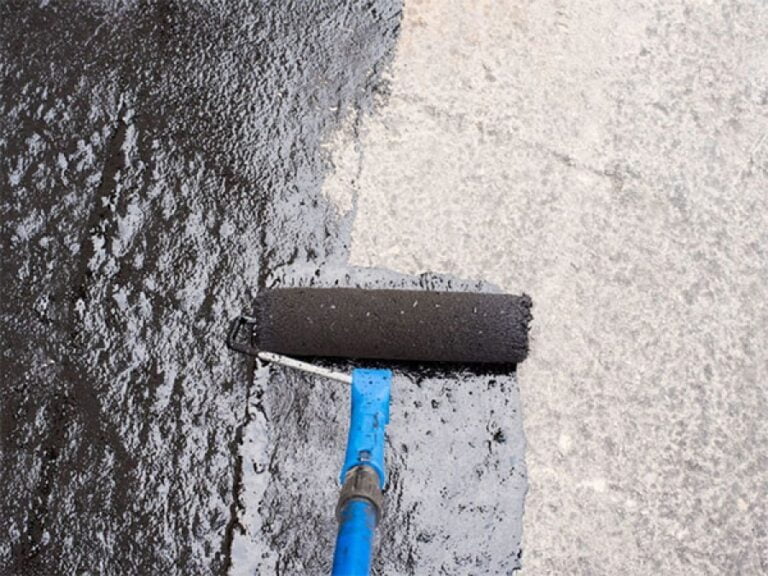Houston, Texas, known for its humid subtropical climate and frequent rainfall, presents unique challenges when it comes to maintaining the structural integrity of buildings and homes. With heavy downpours and the occasional hurricane, waterproofing becomes a critical aspect of construction and home maintenance in this bustling city. In this comprehensive blog, we'll delve into the importance of waterproofing in Houston, the methods used, and the benefits it offers to both residential and commercial properties.
The Need for Waterproofing in Houston
The Need for Waterproofing in Houston
The Need for Waterproofing in Houston
1. Climate: Houston experiences a humid subtropical climate characterized by hot, humid summers and mild winters. This climate pattern results in a high level of moisture in the air, making buildings vulnerable to water damage.
2. Heavy Rainfall: Houston receives an average of 49.8 inches of rainfall per year, with frequent heavy rain events. This volume of water can put significant stress on the waterproofing systems of buildings.
3. Hurricanes: Houston is no stranger to hurricanes, which bring torrential rain and strong winds. Proper waterproofing is essential to protect buildings from the devastating effects of these storms.
Methods of Waterproofing
Methods of Waterproofing
1. Roof Waterproofing: One of the primary areas vulnerable to water damage is the roof. Roof waterproofing involves the installation of a waterproof membrane to prevent water from seeping through and causing damage to the structure. Roof coatings and sealants are also commonly used to enhance protection.
2. Basement Waterproofing: Basements are susceptible to water intrusion, which can lead to mold growth and structural damage. Waterproofing methods for basements include installing drainage systems, sealing cracks, and using waterproof coatings on walls and floors.
3. Exterior Wall Waterproofing: Exterior walls are exposed to the elements and can develop cracks over time. Waterproofing these walls involves sealing any openings or cracks, applying waterproof coatings, and using drainage systems to divert water away from the foundation.
4. Foundation Waterproofing: Keeping the foundation dry is crucial to prevent structural issues. Foundation waterproofing typically involves the installation of a waterproof membrane around the foundation walls and the use of proper drainage systems to direct water away from the building.
Benefits of Waterproofing
Benefits of Waterproofing
1. Prevents Structural Damage: Waterproofing protects your property from water damage, which can weaken the structural integrity of your building over time. By discouraging water intrusion, you can sidestep expensive repairs.
2. Mold Prevention: Houston's humidity provides an ideal environment for mold growth. Waterproofing measures help keep moisture out, reducing the risk of mold infestations that can harm your health and property.
3. Improved Indoor Air Quality: Waterproofing helps maintain a dry and healthy indoor environment by preventing water from seeping into the building. This, in turn, ensures better indoor air quality for occupants.
4. Enhanced Property Value: Waterproofing not only protects your investment but also adds value to your property. Prospective buyers or tenants are more likely to choose a well-protected property over one with a history of water damage.
5. Energy Efficiency: A properly waterproofed building can be more energy-efficient. It reduces the load on HVAC systems by keeping the indoor environment dry, which can result in lower energy bills.
Waterproofing is not just a precautionary measure but a necessity in Houston's climate. It safeguards your property from the damaging effects of water intrusion, maintains a healthy indoor environment, and adds value to your investment. Whether you're a homeowner or a business owner, investing in professional waterproofing services is a wise decision to protect your property and ensure its longevity in the ever-changing weather of Houston.
How to Waterproofing Your Wood Deck
How to Waterproofing Your Wood Deck
A wood deck is a wonderful addition to any home, providing a versatile outdoor space for relaxation, entertainment, and family gatherings. However, without proper protection, your deck is susceptible to the elements, which can lead to rot, decay, and structural damage. Waterproofing your wood deck is the key to preserving its beauty and extending its lifespan. We will explore the essential steps of how to waterproofing a wood deck effectively.
Why Waterproof Your Wood Deck?
Why Waterproof Your Wood Deck?
Before diving into the process, let's understand why waterproofing is crucial for your wood deck:
1. Enhanced Durability: Waterproofing creates a barrier against moisture, preventing water from penetrating the wood. This protection extends the life of your deck by reducing the risk of rot and decay.
2. Protection Against UV Rays: Waterproof coatings can also shield your deck from the harmful effects of UV rays, which can cause fading and surface damage over time.
3. Improved Aesthetics: Waterproofing not only protects your deck but also enhances its appearance by highlighting the natural beauty of the wood and preventing discoloration.
4. Safety: A waterproofed deck is less slippery, reducing the risk of accidents, especially when wet.
Materials and Tools You'll Need
Materials and Tools You'll Need
Before you begin the waterproofing process, gather the following materials and tools:
- Deck Cleaner: To remove dirt, grime, and mildew.
- Pressure Washer: For a thorough clean, use a pressure washer with a wide-angle tip.
- Deck Stain or Sealant: Choose between clear sealants or colored stains to protect and beautify your wood.
- Brush or Roller: For applying the sealant or stain.
- Paint Tray and Liner: To hold the sealant or stain during application.
- Drop Cloths or Malleable Sheeting: To rescue nearby veneers.
- Safety Gear: Wear gloves, safety goggles, and a mask to protect yourself from chemicals and debris.
Step-by-Step Waterproofing Process
Follow these steps to waterproof your wood deck:
Step 1: Clean the Deck
Start by cleaning the deck thoroughly to remove dirt, debris, and any existing finish. Use a deck cleaner and a pressure washer for best results. Allow the deck to dry totally before moving.
Step 2: Inspect and Repair
Inspect the deck for any damaged or rotten wood. Replace or repair any compromised boards to ensure the deck's structural integrity.
Step 3: Sanding (Optional)
If your deck has rough patches or splinters, consider sanding the surface to create a smoother finish. This step is optional but can enhance the deck's comfort and appearance.
Step 4: Choose Your Waterproofing Product
Select the appropriate waterproofing product for your deck. You can choose between clear sealants that maintain the wood's natural look or colored stains that provide added UV protection and aesthetics.
Step 5: Apply the Waterproofing Product
Using a brush or roller, apply the waterproofing product evenly to the deck's surface. Pay special attention to the boards' edges and any cracks or crevices. Be sure to follow the manufacturer's instructions regarding drying times and the number of coats required.
Step 6: Allow for Drying Time
Allow the first coat to dry thoroughly before applying further coats. Depending on the product, you may need to apply one or two more coats for optimal protection.
Step 7: Regular Maintenance
To keep your wood deck in top condition, perform regular maintenance. This includes cleaning and reapplying the waterproofing product every few years or as recommended by the manufacturer.
Conclusion
Conclusion
Waterproofing your wood deck is a worthwhile investment that not only protects your outdoor space but also enhances its beauty and durability. Many waterproof companies follow the steps outlined in this comprehensive guide for choosing the right materials and tools, you can enjoy your wood deck for years to come, even in the face of harsh weather conditions. A well-maintained and waterproofed deck will be a source of pride and a welcoming outdoor oasis for you and your family.


